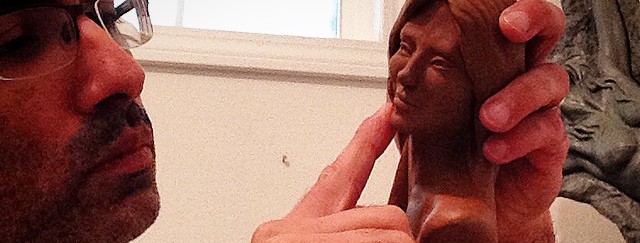Observation and Perception

Observation and perception are two of the most important skills for visual artists to develop. Yes, these are skills that can be developed. I won’t buy into the belief that you are born with them, and even if you do you need to exercise in order to get better at it. It is the same with every talent. If you don’t seek to develop the talent and rely only on the natural-born talent I might be dubious if there is passion involved. Those who are passionate for what they do and love are in constant pursue to get better at it. Talent development requires practice, effort, experimentation, and lots of work.
Observation requires much more than just looking. Observing requires deeper attention. Through observation we can notice things that will challenge logic and sense. In research language the observation process is a way to collect data. It provokes a detailed examination of the phenomena under analysis. This examination goes beyond looking and transfers to all senses.
Perception is like adding another sense; a sixth sense if you will. Perception creates a mental impression from which observations can be understood and interpreted. It is this conception or notion of reality that facilitates making sense of the information we receive. Perception can interpret external and internal information simultaneously and provides meaning to the observations.
In art these two elements are combined for the artist to make sense of the creation process adding meaning to the artwork. I try to mentally document how through observation and perception the elements acquire visual correlation in one cohesive sculpture or painting. I observe where a curve is not complete or following an angle with fluidity and through perception I can define where to fix it to make visual logic within the intention of the piece.

Visual Intelligence
There are three classes of people:
those who see, those who see when they are shown, those who do not see.
Leonardo Da Vinci
Howard Gardner proposed in Frames of Mind: The Theory of Multiple Intelligences that intelligence as ‘one thing’ is too limiting to account to the broader range of human abilities and capabilities. He separates intelligence in nine modalities (I’m sure that the list will continue growing):
Look Up by Iván Tirado
It is possible that the first group of people coming to mind when one hears ‘visual intelligence’ is artists. Not only people who can draw, paint, sculpt, or design have visual intelligence. Visual intelligence is extended to sports. Court vision in basketball is important to shoot and pass the ball. The same applies in football, baseball, and boxing. Dancers too require that sense of space when they perform. Even today’s video games require visual intelligence with those virtual words that make me dizzy about five minutes into the game.
I do believe that artists have visual intelligence indeed. I also believe that artists share bodily-knestetic intelligence too in order to transfer their vision into a tangible creation. Bodily-knestetic intelligence is not only for sports and dance. I believe we can call it ‘technique’. Artists also share logical-mathematical intelligence. Moreover, artists are also existential or spiritual intelligent. Why it seems like I’m focusing in artists and visual intelligence? Well, I am an artist. I also stink at music and most sports. The fact is that my favorite aspect of visual intelligence because it is not about what we see with the eyes.
Blind people develop visual intelligence to make sense of their environment. Is that perception of space that goes beyond the world we see. Visual intelligence can inform the other intelligences allowing us to become aware of a different kind of world. We can close our eyes and see it. Our senses become consumed with it. This intelligence allows the development of problem-solving skills, capturing and interpreting information, and perceived the world we see with the naked eye and the world not seen. Leonardo Da Vinci called it ‘the reflective eye’. Leonardo believed that ‘the artist sees what others only catch a glimpse of‘.